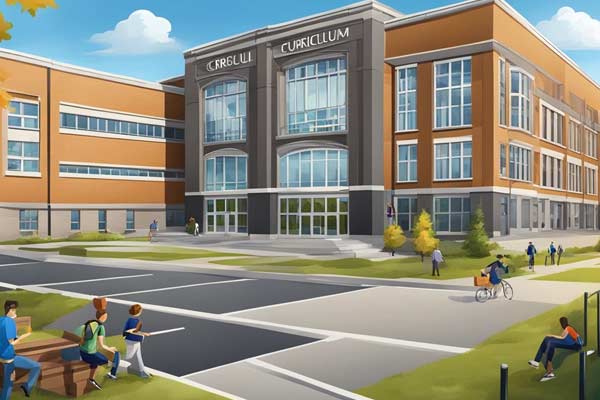Pros and Cons of Title 1 Schools: An Overview
Pros of Title 1 Schools
Title 1 schools offer various benefits to students, teachers, and communities. This section will explore some of the most significant advantages of Title 1 schools.
Access to Additional Funding
One of the most significant benefits of Title 1 schools is the additional funding they receive. This funding can provide additional resources, such as textbooks, technology, and other materials, that may not be available in non-Title 1 schools. Additionally, Title 1 schools can use this funding to hire additional staff, including teachers, support staff, and other professionals, to help meet the needs of their students.
Small Class Sizes
Title 1 schools often have smaller class sizes than non-Title 1 schools. This is because Title 1 funding can be used to hire additional teachers, which allows for smaller class sizes. Smaller class sizes have been shown to be beneficial for students, as they allow for more individualized attention and support from teachers.
Targeted Support for At-Risk Students
Title 1 schools are designed to provide targeted support for at-risk students, including those who are academically or economically disadvantaged. This support can take many forms, including targeted interventions, small group instruction, and academic support services. By providing this support, Title 1 schools can help ensure all students have access to the resources they need to succeed academically.
Act as Community Centers
Title 1 schools often act as community centers, providing a range of services and resources to students and families. These services may include after-school programs, health services, and other support services that can help students and families access the resources they need to succeed.
Contribute to Workforce Development
Title 1 schools can also contribute to workforce development by providing students with the skills and knowledge needed to succeed. This can include providing students with access to career and technical education programs and other resources that can help prepare them for success.
Enhance Property Values and Attract Investment
Title 1 schools can also enhance property values and attract investment to the communities they serve. This is because they often provide a range of services and resources that can help improve the overall quality of life in the community.
Foster a Sense of Community and Civic Engagement
Finally, Title 1 schools can foster community and civic engagement by providing students and families opportunities to get involved in their communities. This can include opportunities for parental involvement and partnerships with community organizations and other stakeholders.
Cons of Title 1 Schools
High Teacher Turnover Rates
Title 1 schools often experience high teacher turnover rates due to the challenging nature of the work. Teachers in these schools may face additional stressors, such as a lack of resources, large class sizes, and a higher proportion of students from low-income backgrounds. These factors can lead to burnout and frustration, causing teachers to leave their positions. High teacher turnover rates can hurt student learning and academic progress, as students may not receive consistent instruction from highly qualified teachers.
Limited Extracurricular Opportunities
Title 1 schools may have limited extracurricular opportunities due to financial limitations. These schools might need extra resources for activities like sports, music, and art, limiting students’ chances to explore interests beyond class.
Potential Stigma for Students
Title 1 schools may carry a stigma for students, as they are often associated with low-income backgrounds and academic struggles. This can lead to unfair judgments and stereotypes, which can negatively impact students’ self-esteem and motivation. Students in these schools may also face challenges accessing educational resources and opportunities due to their disadvantaged status.
🌟 Hey Students! 🚀 Ready for the ultimate experience? Join us on Studentsinside.com's Facebook, YouTube, WhatsApp, and LinkedIn. Click now for tips, fun, and success vibes! 🌈✨ #StudentLife #JoinUs
Financial Limitations
Title 1 schools may face financial limitations due to the formula used to allocate funding. These schools may receive less funding than others, limiting their ability to provide resources and support for student learning. This can also impact staffing levels, teacher salaries, and facilities, making it difficult for these schools to attract and retain experienced educators.
Challenges in Retaining Experienced Educators
Title 1 schools may face challenges retaining experienced educators due to the high teacher turnover rates and limited resources. These schools may be unable to offer competitive salaries or professional development opportunities, making it difficult to retain highly qualified teachers. This can hurt student learning and academic progress.
Funding Disparities
Title 1 schools may face funding disparities due to the formula used to allocate funding. These schools may not receive enough funding to provide the resources and support needed to address the achievement gap and improve educational outcomes for disadvantaged students. This can make it difficult for these schools to meet accountability standards and improve student learning.
Persistent Stigma and Stereotypes
Title 1 schools may face persistent stigma and stereotypes, negatively impacting students, teachers, and policymakers. These schools may be unfairly judged based on their low-income backgrounds and academic struggles, leading to a lack of support and resources. This can make it difficult for these schools to improve student learning and academic progress and can perpetuate the achievement gap.
Frequently Asked Questions
What are the benefits and drawbacks of attending a Title 1 school?
Title 1 schools have the advantage of receiving additional funding to support students from low-income families. This funding can be used to hire highly qualified teachers and support staff and provide individualized instruction, intervention programs, academic support, and more. However, Title 1 schools may face challenges such as high teacher turnover rates, limited resources, and a higher concentration of students with academic and behavioral needs.
How does the educational experience differ between Title 1 and non-Title 1 schools?
Title 1 schools have smaller classes and personalized teaching, while non-Title 1 schools offer more resources and extracurricular options.
What are the implications of Title 1 status for teacher resources and support?
Title 1 status can have significant implications for teacher resources and support. Title 1 schools may receive additional funding to hire highly qualified teachers and support staff, provide professional development opportunities, and offer ongoing support and coaching. However, Title 1 schools may face challenges such as high teacher turnover rates, limited resources, and a higher concentration of students with academic and behavioral needs.
How do Title 1 schools impact student academic outcomes?
Title 1 schools can positively impact student academic outcomes, particularly for students from low-income families. Title 1 funding can provide individualized instruction, intervention programs, and academic support to help students succeed. However, the impact of Title 1 schools on student academic outcomes may vary depending on a range of factors, including the quality of instruction, the resources available, and the level of community support.
What are the criteria for a school to qualify as a Title 1 school?
To qualify as a Title 1 school, a school must have a certain percentage of students from low-income families. The percentage varies depending on the state and the type of Title 1 funding, but in general, a school must have at least 40% of students from low-income families to qualify for Title 1 funding.
In what ways can Title 1 funding be utilized to improve schools?
Title 1 funding can be used to improve schools in various ways, including hiring highly qualified teachers and support staff, providing professional development opportunities, offering ongoing support and coaching, and providing individualized instruction, intervention programs, and academic support. It can also be used to purchase instructional materials, technology, and other resources to support student learning.








